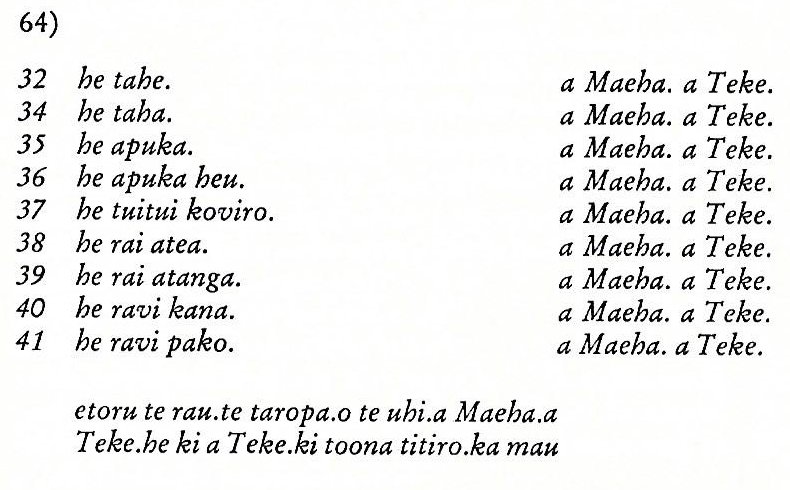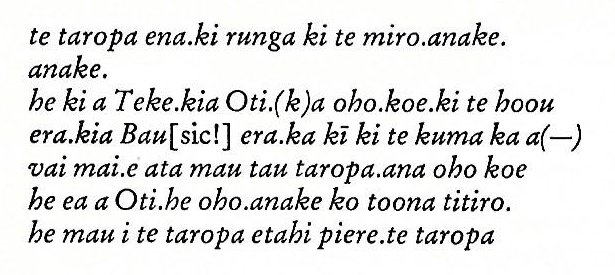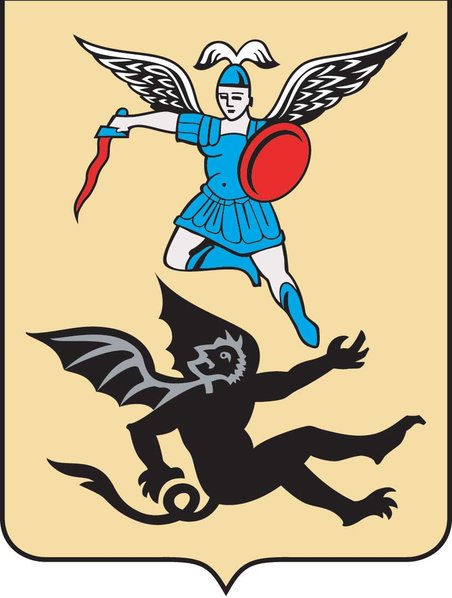63 → 9 weeks and 64 = 8 * 8 (a perfect square field) was used
for the chess board.

... Ogotemmêli had his own ideas
about calculation. The Dogon in fact did use the decimal
system, because from the beginning they had counted on
their fingers, but the basis of their reckoning had been
the number eight and this number recurred in what they
called in French la centaine, which for them
meant eighty. Eighty was the limit of reckoning, after
which a new series began. Nowadays there could be ten
such series, so that the European 1,000 corresponded to
the Dogon 800. But Ogotemmêli believed that in the
beginning men counted by eights - the number of cowries
on each hand, that they had used their ten fingers to
arrive at eighty, but that the number eight appeared
again in order to produce 640 (8 x 10 x 8). 'Six hundred
and forty', he said, 'is the end of the reckoning.'
According to him, 640 covenant-stones had been thrown up
by the seventh Nummo to make the outline in the grave of
Lébé.

However, 640 is not a square (although 64 * 10 * 10 is). Instead we can count 2 *
320, where 320 was coinciding, at the time of
rongorongo, with the right ascension day for the
South Pole star, viz. Dramasa. Here there was a 'hole' (vaha):
... Probably the dream soul hurried
home because Spica was due to arrive, which was 4 * 29½
= 118 days before the time line up to the South Pole
star (Dramasa, σ Octantis).
I.e, from σ Virginis to
σ Octantis there were *320 - *200 =
*80 right ascension days.
| e
vaha
noho ragi |
erua ahi |
i te hau
tea |
Erua hau tea |
i te henua
i te rima |
|
Vaha.
Hollow; opening; space between
the fingers (vaha rima); door cracks
(vaha papare). Vahavaha, to
fight, to wrangle, to argue with abusive
words. Vanaga. 1. Space, before T; vaha
takitua, perineum. PS Mgv.: vaha,
a space, an open place. Mq.: vaha,
separated, not joined. Ta.: vaha, an
opening. Sa.: vasa, space, interval.
To.: vaha, vahaa, id. Fu.:
vasa, vāsaà,
id. Niuē: vahā.
2. Muscle, tendon; vahavaha,
id. Vahahora
(vaha
1 - hora
2), spring. Vahatoga
(vaha
1 - toga
1), autumn. 3. Ta.: vahavaha,
to disdain, to dislike. Ha.:
wahawaha,
to hate, to dislike. Churchill.
Ahi. Fire; he-tutu i te ahi
to light a fire. Ahiahi =
evening; ahiahi-ata, the last moments
of light before nightfall. Vanaga. 1.
Candle, stove, fire (vahi); ahi
hakapura, match; ahi hakagaiei,
firebrand waved as a night signal. P Mgv.:
ahi, fire, flame. Mq.: ahi,
fire, match, percussion cap. Ta.: ahi,
fire, percussion cap, wick, stove. 2. To be
night; agatahi ahi atu, day before
yesterday. 3. Pau.: ahi, sandalwood.
Ta.: ahi, id. Mq.: auahi, a
variety of breadfruit. Sa.: asi,
sandalwood. Ha.: ili-ahi, id.
Ahiahi, afternoon, night; kai ahiahi,
supper. P Pau., Mgv., Mq., Ta.: ahiahi,
afternoon, evening. Ahipipi (ahi
1 - pipi 2) a spark, to flash.
Churchill. |
 |
 |
 |
 |
 |
 |
 |
|
Ca5-32 (137) |
Ca5-33 |
Ca5-34 |
Ca5-35 |
Ca6-1 |
Ca6-2 |
Ca6-3 |
|
CLOSE TO THE SUN: |
|
Febr 4 |
5 |
6 |
7 (403) |
8 |
9 (40) |
10 |
|
... On
February 9 the Chorti Ah K'in,
'diviners', begin the agricultural year.
Both the 260-day cycle and the solar year
are used in setting dates for religious and
agricultural ceremonies, especially when
those rituals fall at the same time in both
calendars. The ceremony begins when the
diviners go to a sacred spring where they
choose five stones with the proper shape and
color. These stones will mark the five
positions of the sacred cosmogram created by
the ritual. When the stones are brought back
to the ceremonial house, two diviners start
the ritual by placing the stones on a table
in a careful pattern that reproduces the
schematic of the universe. At the same time,
helpers under the table replace last year's
diagram with the new one. They believe that
by placing the cosmic diagram under the base
of God at the center of the world they
demonstrate that God dominates the universe.
The priests place the stones in a very
particular order. First the stone that
corresponds to the sun in the eastern,
sunrise position of summer solstice is set
down; then the stone corresponding to the
western, sunset position of the same
solstice. This is followed by stones
representing the western, sunset position of
the winter solstice, then its eastern,
sunrise position. Together these four stones
form a square. They sit at the four corners
of the square just as we saw in the Creation
story from the Classic period and in the
Popol Vuh. Finally, the center stone is
placed to form the ancient five-point sign
modern researchers called the quincunx ...
 |
|
DRAMASA
=
σ
Oct.,
χ
Capricorni (320.0),
ν
Aquarii (320.3),
γ
Equulei (320.6),
ο
Pavonis (320.8) |
α Oct. (321.5), δ
Equulei (321.7),
φ
Capricorni (321.8) |
KITALPHA (Part of a Horse) =
α
Equulei
(322.0),
ALDERAMIN (The Right Arm) =
α
Cephei
(322.9) |
DAI =
ι
Capricorni
(323.5),
β
Equulei (323.8) |
γ
Pavonis (324.1),
YAN =
ζ
Capricorni
(324.6) |
Al Sa'd al Su'ud-22 (Luckiest of the Lucky)
/
Emptiness-11 (Rat)
TSIN = 36 Capricorni
(325.2),
ALPHIRK (The Flock) =
β
Cephei
(325.7),
SADALSUD
=
β
Aquarii,
ξ
Gruis (325.9) |
no star listed (326) |
|
DAY 320 |
321 |
322 |
323 |
324 |
325 (→ 3-25) |
326 |
|
CLOSE TO
THE FULL MOON: |
|
Aug 5 |
6 |
7 |
8 (11 * 20 → T20) |
9 |
10 |
11 |
|
9h (137.0)
σ¹ Ursa Majoris (137.0), κ Cancri (137.3), τ
Cancri (137.4),
ALSUHAIL (al Wazn, of the Weight)
= λ
Velorum
(137.5), σ² Ursa Majoris (137.6), τ Ursa
Majoris (137.7), ξ Cancri (137.8)
*96.0 = *137.4 - *41.4 |
κ Pyxidis (138.0), ε Pyxidis (138.5) |
π
Cancri (139.2),
MIAPLACIDUS =
β
Carinae
(139.3),
TUREIS (Little Shield) =
ι Carinae
(139.8) |
no star listed (140) |
θ
Pyxidis (141.5),
MARKAB VELORUM =
κ
Velorum
(141.5),
AL MINHAR AL ASAD (The Nose
of the Lion) =
κ
Leonis
(141.6),
λ
Pyxidis (141.9) |
Star-25 (Horse) /
ANA-HEU-HEU-PO-5 (Pillar where debates were
held)
ALPHARD (The Horse) =
α
Hydrae
(142.3),
ω
Leonis (142.6),
τ¹
Hydrae (142.7) |
Al Tarf-7 (The End)
ψ
Velorum (143.3),
ALTERF = λ Leonis,
τ²
Hydrae(143.4),
ξ
Leonis (143.5)
*102.0 = *143.4 - *41.4 |
|
'July 9 |
10 |
11 |
(193 →
Castor) |
13 |
14 |
(196 →
Pollux) |
|
DAY 137 |
138 |
139 |
140 |
141 |
142 |
143 |
Furthermore, right ascension day 64 corresponded to the
zero-day hole (gap, vaha) at the beginning of side a on the G
tablet:
|
0h |
MARCH 22 (*1) |
23 (82) |
|
no glyph |
 |
 |
|
Ga1-1 |
Ga1-2 |
|
HYADUM II = δ¹ Tauri
(64.2) |
Net-19 (Crow)
AIN
(Eye) =
ε Tauri,
θ¹
Tauri,
θ²
Tauri (65.7) |
no star listed (66) |
|
May 24 |
25 (145) |
26 (*66) |
|
°May 20 |
21 (*61) |
22 (142) |
|
'April 27 |
28 (118) |
29 (*39) |
|
"April 13 |
14 (104) |
15 (*25) |
|
DAY 64 |
DAY 1 = 65 - 64 |
2 |
|
- |
1 Ko
Apina Iti
ko Rapa Kura |
2 Ko
Hanga O Uo
a vave renga |
 |
|
NAKSHATRA DATES: |
|
SEPT 20 (*183) |
21 (264) |
EQUINOX |
|
Heart-5 (Fox)
σ
Scorpii
(247.0),
HEJIAN = γ Herculis
(247.2),
ψ
Ophiuchi (247.7) |
ρ
Ophiuchi (248.1),
KAJAM (Club) =
ω
Herculis
(248.3),
χ
Ophiuchi (248.5),
SHE LOW (Market Tower) = υ Ophiuchi,
Tr.
Austr. (248.7), ζ Tr. Austr. (248.8) |
Al Kalb-16 (The Heart) /
Jyeshtha-18 (Eldest) /
ANA-MUA-1 (Entrance pillar)
ANTARES
= α Scorpii
(249.1),
MARFIK (Elbow) = λ Ophiuchi,
φ Ophiuchi (249.5), ω Ophiuchi (249.8 |
|
Nov 23 (327) |
24 |
25 (*249) |
|
°Nov 19 |
20 (*244) |
21 (325) |
|
'Oct 27 (300) |
28 |
29 (*222) |
|
"Oct 13 (286) |
14 |
15 (*208) |
 |
Should we consider the beginning of page E:64 as
corresponding to a vaha, we can then use the glyphs
towards the end of side b on the G tablet in order to
identify right ascension day 64 - 30 (number of yam
varietes listed until page E:64), viz. at the π-date
"March 14.


The hole where we were expecting yam variety number 33
to be would
then correspond to heliacal Mira (that wonderful star).
...
Although an old constellation, Cetus is by no means of
special interest, except as possessing the south pole of
the Milky Way and the Wonderful Star, the variable Mira;
and from the fact that it is a condensation point of
nebulae directly across the sphere from Virgo, also
noted in this respect ...

...
Mira also known as Omicron Ceti
(ο Ceti,
ο
Cet), is a red giant star estimated 200-400 light years
away in the constellation Cetus. Mira is a binary star,
consisting of the red giant Mira A along with Mira B.
Mira A is also an oscillating variable star and was the
first non-supernova variable star discovered, with the
possible exception of Algol. Apart from the unusual Eta
Carinae, Mira is the brightest periodic variable in the
sky that is not visible to the naked eye for part of its
cycle ...
In a way
Mira therefore can illustrate how life (light)
departs, yet returns again after the completion of a
cycle.

... In 1638 Johannes Holwarda determined a period of the
star's reappearances, eleven months; he is often
credited with the discovery of Mira's variability.
Johannes Hevelius was observing it at the same time and
named it 'Mira' (meaning 'wonderful' or 'astonishing,'
in Latin) in 1662's Historiola Mirae Stellae, for
it acted like no other known star. Ismail Bouillaud then
estimated its period at 333 [= 300 + 33] days, less than one day off
the modern value of 332 days, and perfectly forgivable,
as Mira is known to vary slightly in period, and may
even be slowly changing over time ...
|













